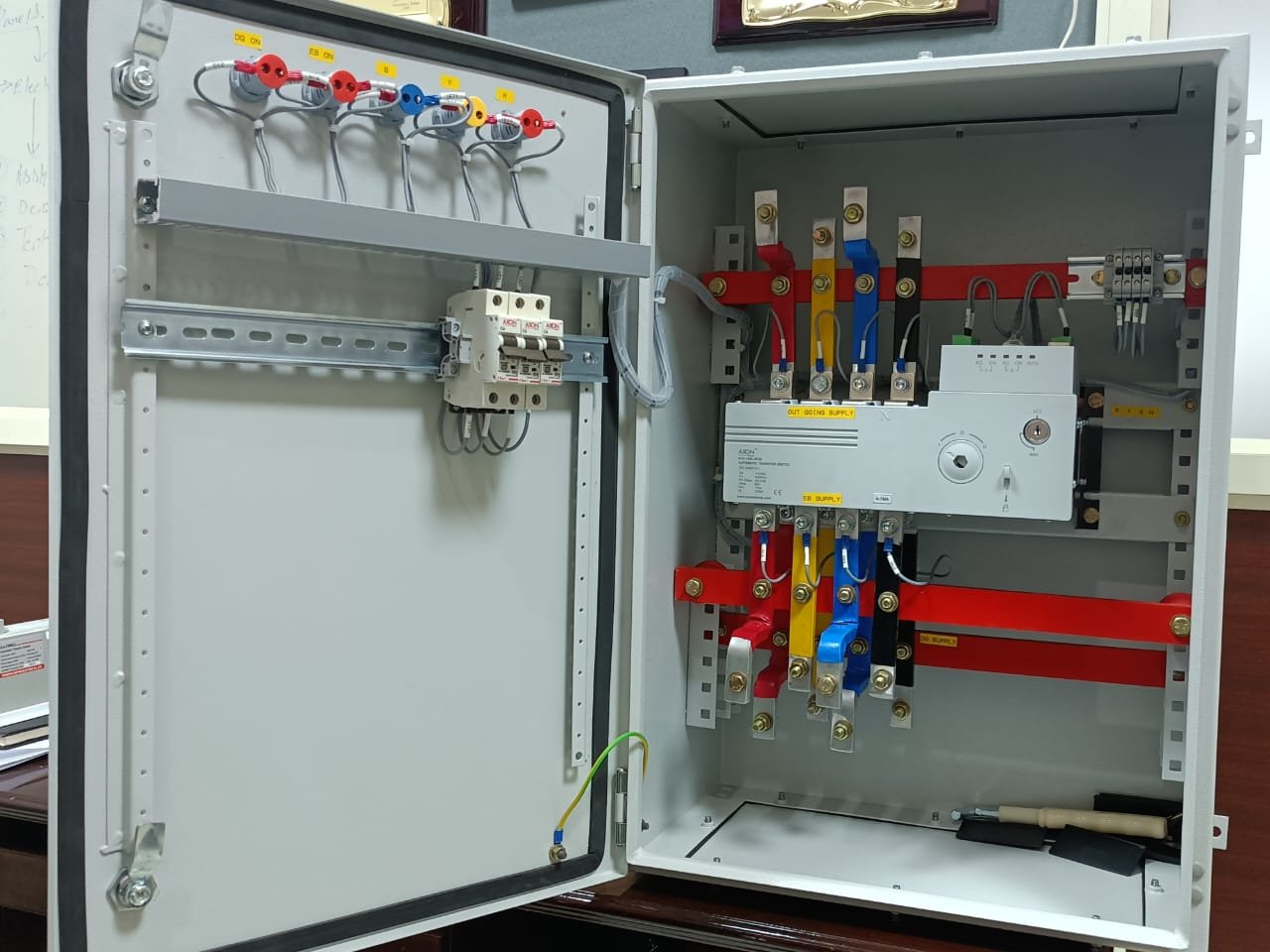
ATS Bangalore (Automatic Transfer Switch): A Crucial Component for Seamless Power Transfer
An automatic transfer switch (ATS) is an essential electrical switching device that plays a critical role in transferring power between two sources, such as the main power supply and a backup generator, without requiring manual intervention. This seamless transition ensures an uninterrupted power supply to critical loads or entire electrical systems during utility power outages. With increasing reliance on electricity in various industries, ATS units have become indispensable for ensuring the continuity of operations in commercial, industrial, and residential settings.
Automatic transfer switches are widely used in places where power disruptions can have serious consequences, such as hospitals, data centers, industrial plants, and commercial buildings. Without an ATS, a power outage would require manual intervention to switch to a backup power source, which could lead to delays, disruptions, and financial losses. In this article, we will delve into the key features, functions, and applications of automatic transfer switches and why they are crucial for reliable power management.
Functionality of an Automatic Transfer Switch
The primary function of an automatic transfer switch is to continuously monitor the availability and quality of the main power supply. In the event of a power failure, significant voltage drop, or other power quality issues, the ATS swiftly switches the electrical load from the main power source to the backup generator or an alternate power source.
This quick response prevents downtime and ensures that essential systems remain operational. Once the main power supply is restored and stable, the ATS automatically switches back to the primary source, ensuring a smooth transition.
Automatic Operation: How Does an ATS Work?
ATS systems are designed to operate automatically, utilizing control logic and sensors to detect power conditions and initiate the transfer process when needed. The system continuously monitors voltage, frequency, and power quality, ensuring that power disruptions are addressed immediately.
Key components of an ATS include:
- Power Sensing Mechanism – Monitors the availability and stability of power.
- Control Panel – Manages switching operations and ensures proper function.
- Switching Mechanism – Transfers the load between power sources.
- Safety Interlocks – Prevents dangerous power overlaps.
Automatic operation eliminates the need for human intervention, making it an ideal solution for locations where constant monitoring is impractical.
Transfer Time: Speed Matters
One of the most important features of an automatic transfer switch is its transfer time – the time it takes to switch between power sources.
- Standard ATS models offer transfer times ranging from a few milliseconds to a few seconds.
- High-speed ATS systems, used in sensitive environments like hospitals and data centers, ensure that power is transferred almost instantaneously.
A fast transfer time is crucial for maintaining power to sensitive equipment, such as:
- Medical devices in hospitals
- Servers in data centers
- Manufacturing equipment
- Security and surveillance systems
A delayed transfer can lead to data loss, equipment damage, and operational disruptions.
Bypass Function: Enhancing Maintenance & Control
Some advanced ATS units include a bypass function, allowing users to manually transfer loads between power sources, bypassing the automatic operation for maintenance or testing. This feature is particularly useful for:
- Performing routine maintenance without disrupting operations.
- Testing backup generators to ensure they are functioning properly.
- Allowing technicians to troubleshoot issues without turning off critical systems.
The bypass function adds flexibility and reliability, making ATS units even more valuable for critical infrastructure.
Monitoring & Control: Ensuring Power Stability
Modern automatic transfer switches come equipped with digital monitoring and control features, allowing users to:
- Check the status of power sources in real-time.
- Monitor voltage, frequency, and power quality remotely.
- Set parameters for automatic operation, ensuring smooth switching.
Many ATS units can be integrated with building management systems (BMS) and cloud-based monitoring platforms, allowing facility managers to track power usage and performance from anywhere.
Sensitivity and Voltage Tolerance
ATS devices are designed to be highly sensitive to changes in voltage and frequency. They quickly detect power fluctuations and respond accordingly, ensuring a smooth and reliable power transfer.
- Overvoltage or Undervoltage Detection – Prevents power surges or drops from affecting equipment.
- Frequency Monitoring – Ensures power stability before switching back to the main source.
These features make ATS ideal for protecting electrical systems from potential damage caused by unstable power conditions.
Applications: Where Are ATS Units Used?
Automatic transfer switches are used in a wide range of industries and facilities, including:
- Hospitals and Healthcare Centers – Ensuring life-saving equipment remains powered.
- Data Centers and IT Facilities – Preventing data loss and downtime.
- Industrial Plants and Factories – Keeping production lines operational.
- Commercial Buildings and Offices – Maintaining security and essential services.
- Residential Homes – Providing backup power during outages.
In each of these settings, an ATS plays a vital role in enhancing power reliability and security.
Safety Features: Preventing Electrical Hazards
Automatic transfer switches are equipped with several safety measures to prevent electrical hazards, such as:
- Simultaneous Connection Prevention – Ensures the generator and utility power do not connect at the same time, avoiding back feeding.
- Load Priority Management – Allows users to set priority loads for critical equipment.
- Circuit Protection Mechanisms – Protects against overloading and short circuits.
These safety features make ATS units a trustworthy solution for backup power management.
Testing & Maintenance: Keeping Your ATS Reliable
Regular testing and maintenance are essential to ensure an ATS functions correctly during a power outage. Recommended maintenance practices include:
- Monthly or quarterly system testing to check automatic switching.
- Annual inspections by a certified electrician to ensure proper operation.
- Monitoring for signs of wear or electrical faults in the ATS system.
Neglecting maintenance can result in unexpected failures, making proactive servicing a critical aspect of power management.
Conclusion: The Importance of ATS in Power Systems
In summary, automatic transfer switches are indispensable components of modern power systems. By ensuring a seamless transition between utility and backup power sources, ATS units protect businesses, homes, and critical infrastructure from power disruptions.
For expert installation, maintenance, and consultation, always seek assistance from qualified electricians or electrical engineers to ensure your ATS is configured for optimal performance.
By investing in an automatic transfer switch, you can ensure reliable, uninterrupted power, safeguarding operations and preventing costly disruptions.

